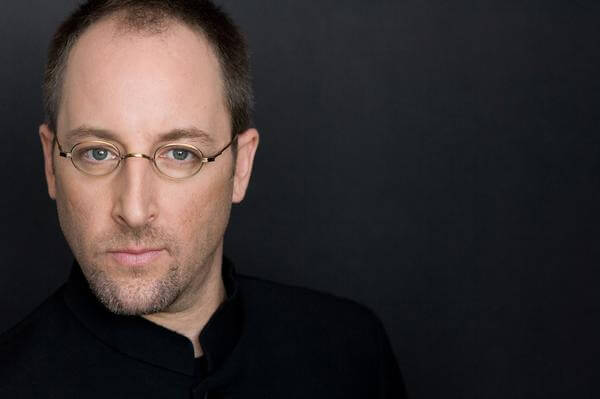CONTACT! wraps season with strong performances, weak presentation

Jeffrey Milarsky conducted the New York Philharmonic’s CONTACT! program Monday night at National Sawdust.
The New York Philharmonic’s CONTACT! new music series came to its season end Monday night at National Sawdust with a concert that displayed its consistent strengths as well as its weaknesses. The program, conducted by Jeffrey Milarsky, showed a broad stylistic range in contemporary music–with one late 20th-century example of modernism– courtesy of four composers. The playing was excellent and the stage management was terrible.
There were two world premieres, composed by Sam Pluta and David Fulmer respectively, each of which was a Philharmonic commission. Because this can still be a surprise to some, it’s worth pointing out that under Alan Gilbert the Philharmonic has commissioned a healthy amount of new works, from composers young and old, from America and all over the world.
Pluta’s binary / momentary ii: flow state / joy state and Fulmer’s Sky’s Acetylene were also the two most compelling works, and not only because they had the best titles. They were sandwiched by the opening katachi: etudes for ensembles, written by Eric Wubbels from 2012, and Jacob Druckman’s Come Round, something of an unsung classic dating back to 1992.
Wubbels’ etudes were finely etched objective music in a concert that otherwise emphasized both instrumental and expressive colors. Scored for wordless voice, flute, saxophonist doubling on bass clarinet, violin, percussionist, and live electronic manipulation by Pluta, Wubbels wrote the piece originally for his compatriots in the Wet Ink ensemble.
That personal touch did not seem to translate to a new group of musicians. The etudes themselves were full of interesting musical events–agitated chatter, tricky rhythms, and tense spaces–finely played by all and conducted with a masterful beat by Jeffrey Milarsky. But they were as dry as can be and one was left clueless as to Wubbels’ thoughts and aesthetic.
Pluta’s piece presented an unexpected and wide contrast between his reputation as a performer, where his instruments are a laptop and software, and the ideas he gives others to express. He is known as an improviser, and talked about the joy and thrill he found in improvising and his hope to translate that to notation.
Orchestrated for the unusual combination of piano, trumpet, two trombones, and percussion, the music kept one just a little off balance while also revealing firm logic–like a seemingly eccentric scientific theory proved true in the end. Every element was a surprise, from the way the trombones produced a wobbly sonic “glue” that set boundaries, to the three notated solos. One each for piano (Eric Huebner), trumpet (Matthew Muckey), and percussion (Kyle Zerna), they all built on what at first seemed a wrong-footed start to develop into dazzling episodes, full of raucous exuberance and good humor.
Fulmer is one of the most important conductors and musicians working with contemporary music, and it was exciting to hear an example of his composing. His piece was a gorgeous, abstractly lyrical set of dramatic gestures and juxtapositions. The scoring for piano, flute, harp, bass, and percussion (mostly metallic and tuned) showed an impressive imagination and the kind of technique that gives one confidence the music is operating with utter clarity.
Built around a series of intimate dialogues between the players, the music centered on flutist Mindy Kaufman, who started on the bass flute, then switched to the regular instrument, and finally to piccolo in an enchanting duet with bassist Max Zeugner. The music followed this progression from lower to higher registers, free of any sense of marked time, perhaps slowly shrugging off a dream before waking to sunlight. Kaufman’s tone on each instrument was full bodied and pure.
Come Round (also seen as Come Around) sounded almost old-fashioned in this context, but nonetheless is a wonderful piece of music. Written for the “Pierrot” ensemble plus percussionist, this is an extended exploration of expressive, quiet, minor-key lyricism. The roundedness is in the structure, with ideas circling each other, returning, and trading places on the time line.
Milarsky conducted, and the playing was beautiful, with fluttering, colorful balances, and a concentration on each sound, antiphony, and line that was absorbing. This turned the tables on the other pieces, appearing as the foundation and context on which they were built.
While musically everything was excellent, presentation-wise everything was wrong. Since Gilbert stepped away from leading these concerts, the Philharmonic has failed to find a host who can steer conversations with the composers so that they stay informative and succinct. How this has gone has depended on whether the composer can do this on their own.
Worse yet were the interminable stage changes. Along with an intermission that should never have been scheduled, it took two and half hours to present about an hour of music, diminishing energy and concentration. Not everyone made it past intermission.






